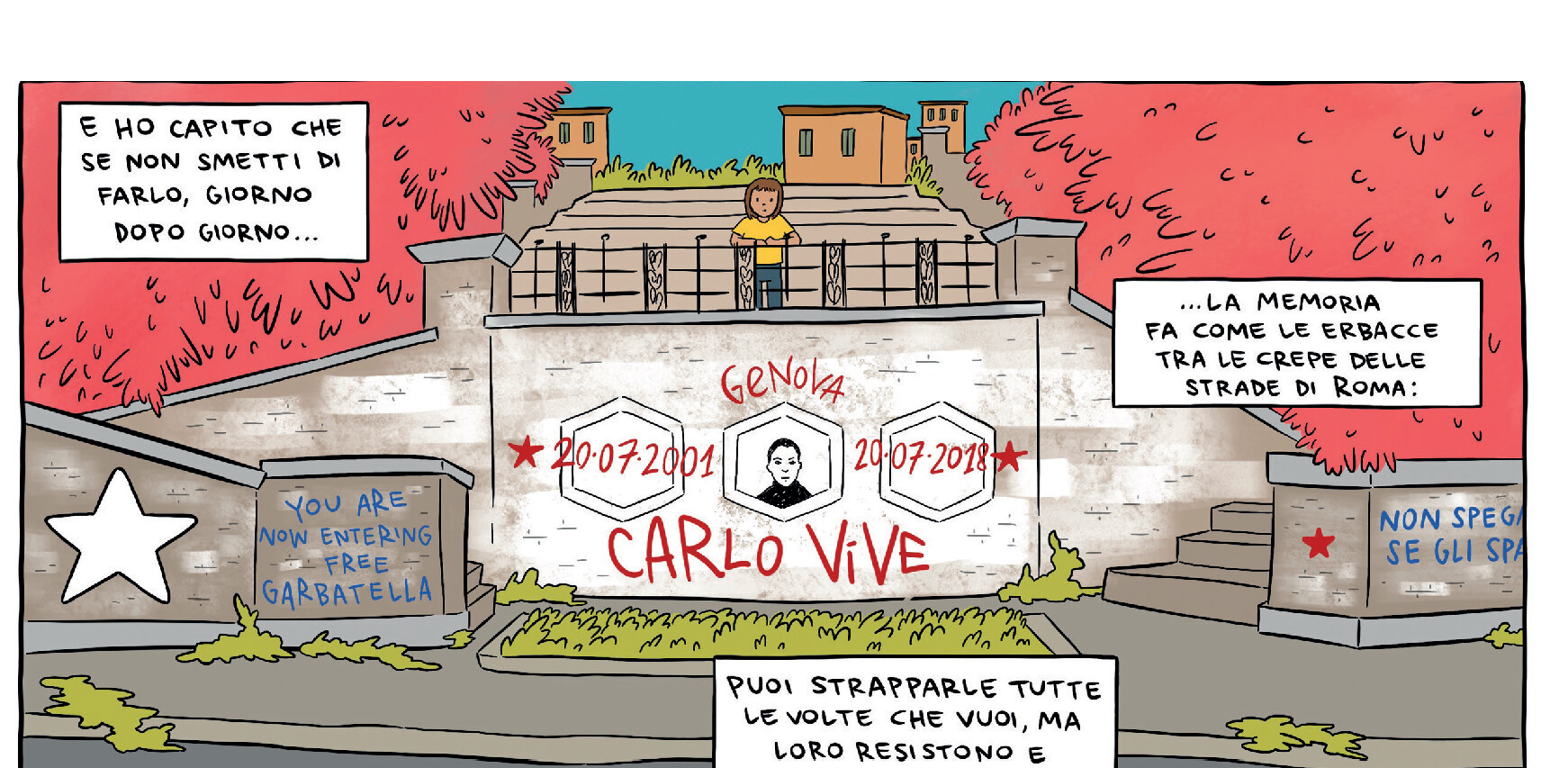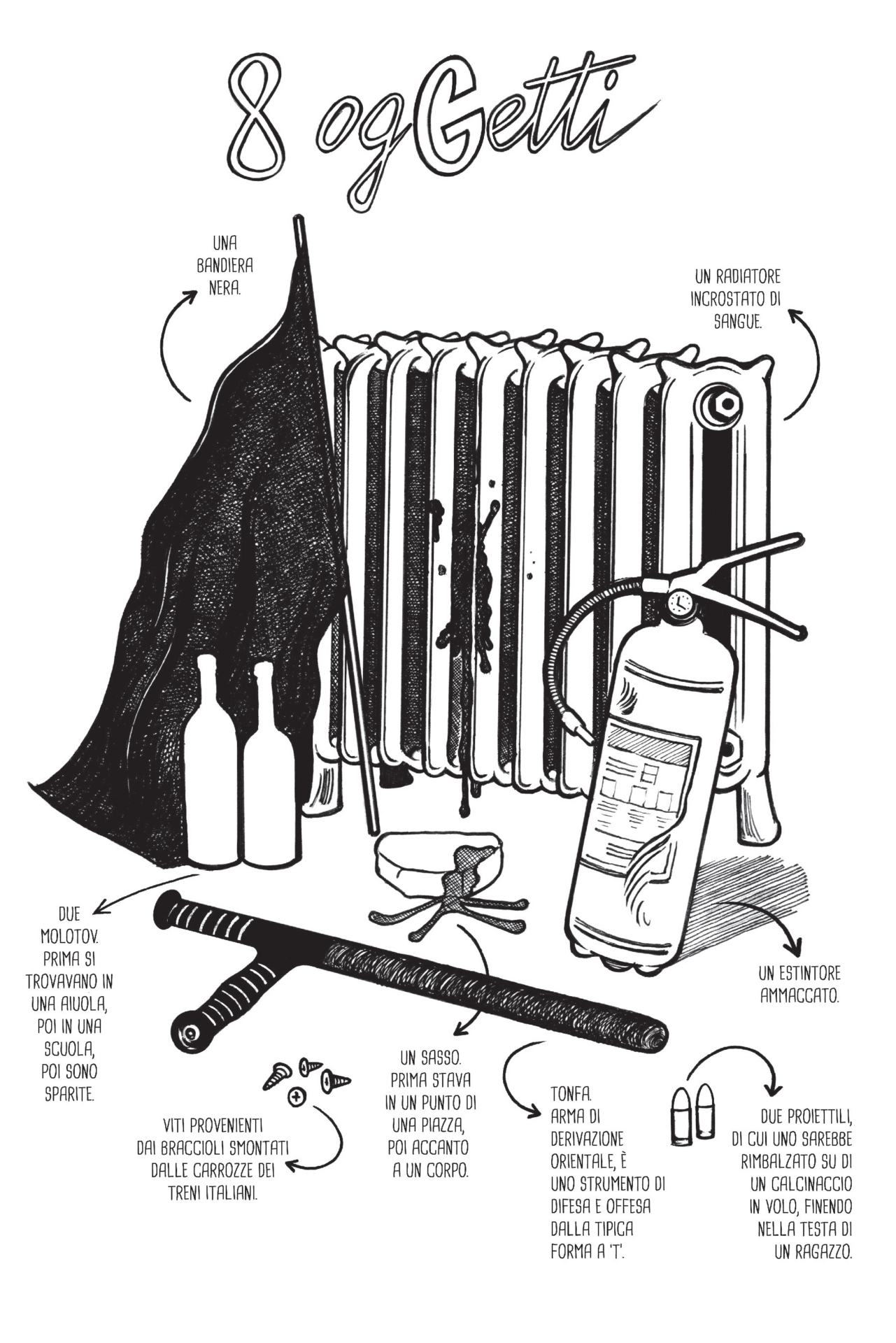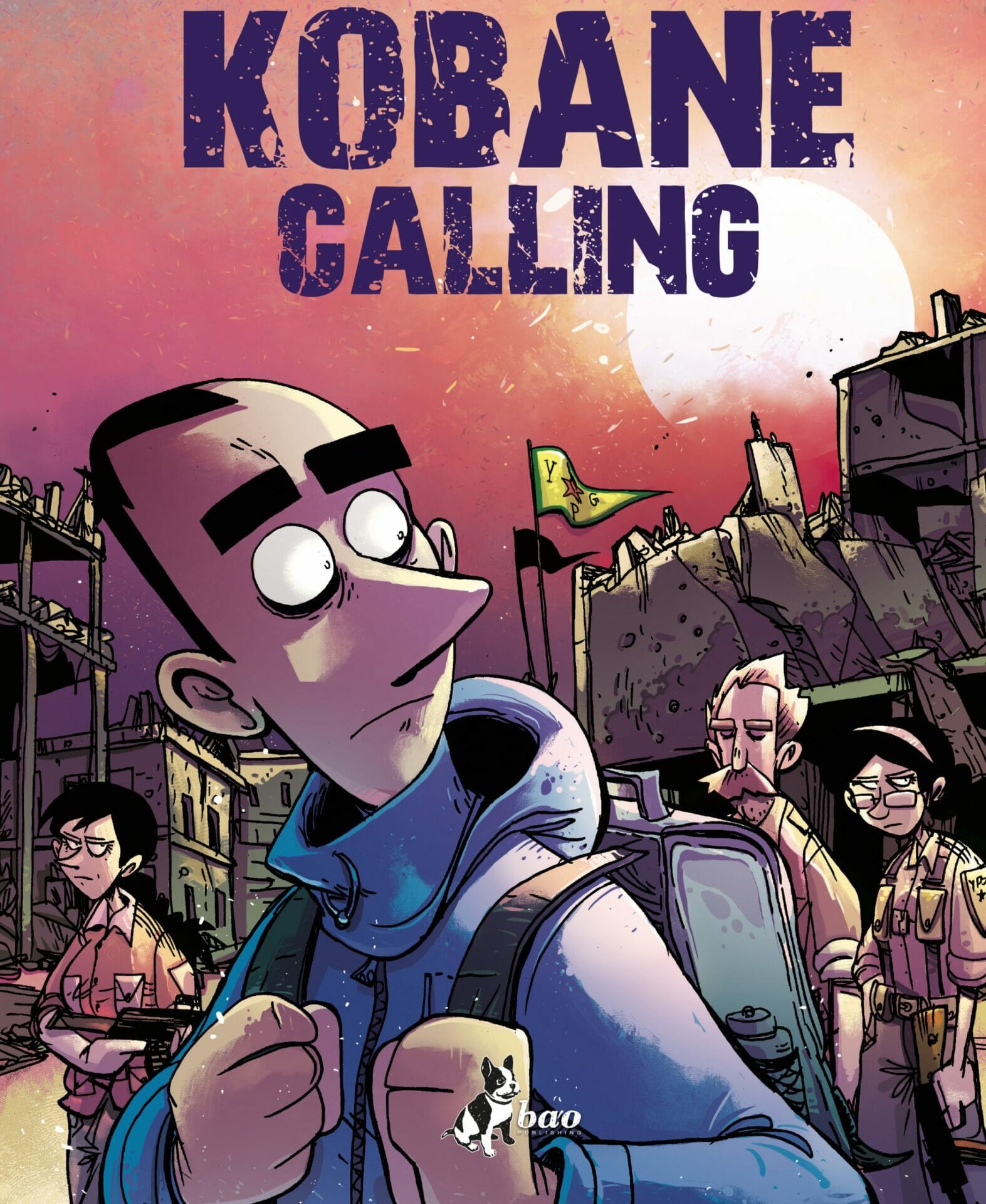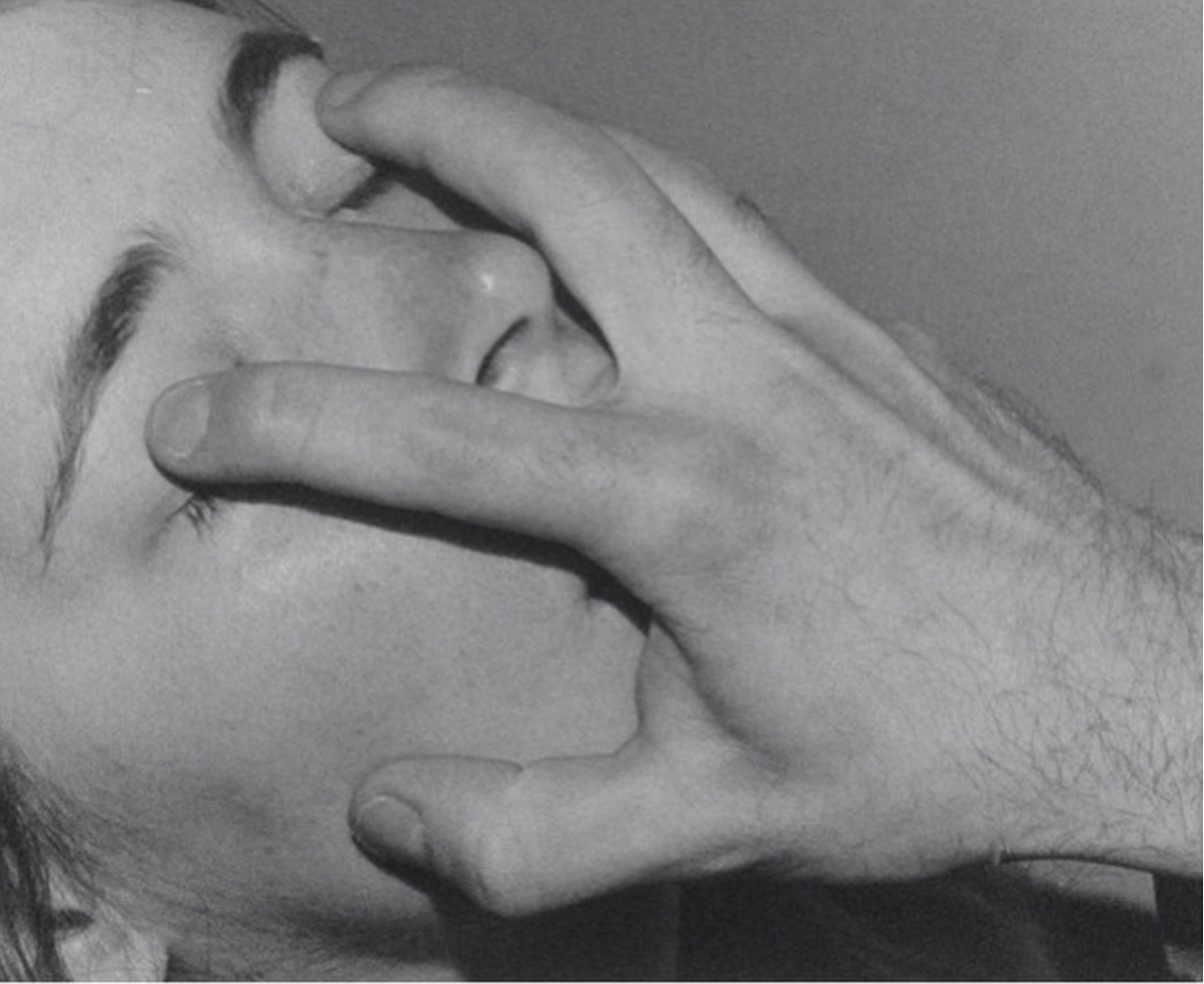
Nessun Rimorso about Genoa G8 | Comics and collective memory
Author
Year
Length
Genre
By
The comics anthology Nessun Rimorso (No regrets) was published in July 2021 by Coconino Press, a Rome-based outfit that is now one of Italy’s leading imprints for comic graphic novels. The SupportoLegale organization was jointly involved in the publication. It came out in time to coincide with the 20th anniversary of the G8 Summit in Genoa in the summer of 2001. The volume combines the works of many well-known Italian cartoonists, including Daniel Cuello, Danilo Maramotti, Marco Cazzato, Rita Petruccioli, and the renowned Zerocalcare, the pen name of Italian cartoonist Michele Rech.
This comic compilation includes articles by the contributors to SupportoLegale, an association that was founded in 2004 to provide support to some of the defendants in the criminal trials of protesters which followed the summit. To date, twenty-five protesters have gone on the stand for offenses including looting and destruction of public property.
The legacy of the G8 Summit
The 27th G8 Summit took place at the height of the anti-globalization movement and just weeks before the terrorist attacks in the United States on September 11th, 2001. The meeting gathered together leaders from the world’s eight leading industrialized countries to focus on the reduction and eventual eradication of world poverty.
Anti-globalization activists started converging on Genoa on the 19th of July 2001, and the first clashes between them and the forces of law and order erupted the following day. During the large and often violent protests, an Italian police officer shot dead a 23-year-old demonstrator called Carlo Giuliani, claiming self-defense. The judge who presided over the subsequent case upheld this. On the Saturday during the weekend of the summit, 300,000 demonstrators marched in the city.
The police charged them and took some of the arrested to the Bolzaneto police barracks, where they faced physical and psychological violence. During the night, police forces stormed the Diaz Pertini school building with 93 demonstrators inside, as Nick Davies reported. 61 people ended up in the hospital, three in critical conditions and one in a coma.
The European Court of Human Rights condemned Italy for what had happened in Genoa and called for legislative changes after allegations of torture emerged. Furthermore, Amnesty International called it “the worst suspension of democracy in western Europe since WWII.”
A prism of different perspectives
Nessun Rimorso incorporates comics, journalism, fiction, and investigative aspects. As a result, it’s a prism of different perspectives, as some of the artists attended Genoa G8 while others were not there. Zerocalcare had become known as a brilliant comic reporter with Kobane Calling (2015), a first-person view on the then-ongoing conflict between Kurdish volunteers and fighters from Islamic State in north-eastern Syria. In Nessun Rimorso he tells the story as he does best: from the perspective of his 17-year-old self, who went to Genoa full of hope and instead found himself on the receiving end of violence.
On the other hand, authors such as Rita Petruccioli weren’t in Genoa at all at the time of the clashes but got word from other people of what had happened there. She shows how she ‘virtually’ met Carlo Giuliani, thanks to those who kept his memory alive. Claudio Calia tells some crucial moments of the G8 trials he attended personally in the form of a short graphic novel. Maicol & Mirco stage a dialogue between father and son. The father doesn’t want to admit he went to Genoa G8 in 2001 because he recognizes the world has changed for the worst after those days. Alberto Corradi chooses to draw eight highly significant objects used during the clashes and during the events that unfolded subsequently at the Bolzaneto police barracks and the Diaz-Pertini school.

Comics and collective traumas
Nessun Rimorso follows the established tradition of the politicized graphic novel, or comic, whose subjects are often current affairs-related topics. One prime exponent of this craft is the Maltese-American cartoonist and journalist Joe Sacco, well-known for his graphic novels on Bosnia and Palestine. The most influential Italian comic journalist is indeed Zerocalcare. Comics have proved an effective medium to deal with the more contentious and difficult areas of history. For instance, Art Spiegelman won a Pulitzer Prize in 1992 for the graphic novel Maus, which depicts the Holocaust seen through his father’s eyes. In Persepolis, Marjane Satrapi effectively narrates the experience of being a woman in modern Iran, somebody grieving for the losses of her family and her people.

Nessun Rimorso is also a tool of collective memory. A way to talk about the events that took place in Genoa 2001 to people who know little or nothing about it, a message to both younger and older generations. As the authors say, memory is a collective gear. It takes a crowd to work. Moreover, as the movie The Trial of the Chicago Seven does, it tells how a story about repression from the past can reverberate today.
Tag
Buy a ☕ for Hypercritic









